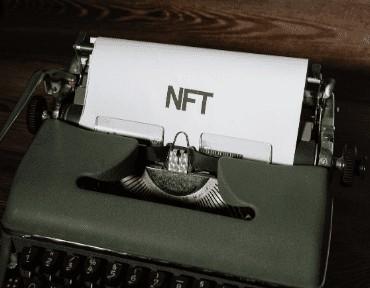Understand What NFTs Are
NFTs, or non-fungible tokens, are a form of digital asset that has gained increasing attention in recent months. NFTs are unique, digital assets that can represent ownership of an item such as a piece of artwork or music. Unlike traditional currencies like Bitcoin, NFTs cannot be interchanged; each token is one-of-a-kind and carries its own set of properties.
In simple terms, an NFT is a digital representation of something tangible or intangible. For example, it could represent ownership rights to a piece of art, the rights to use certain music in videos or even trading cards from your favourite sports team. The possibilities for an NFT are almost infinite — anything that can be represented digitally can be turned into an NFT. Click here to learn more about NFTs and how to invest in NFTs.
NFTs have become increasingly popular because they enable people to own and sell digital assets without having to go through complicated legal processes associated with physical ownership. This means creators and buyers alike can quickly and easily transfer ownership over items without any paperwork involved — you simply purchase the token on the blockchain platform where it is hosted (like Ethereum). If your wondering how to invest in NFTs offers a secure method of ownership and trading of digital items and the potential for investors to gain returns.
The most common way people use NFTs is as collectables; many artists have started creating artwork specifically designed to be sold.
Research Different NFT Platforms
With the explosion in popularity of non-fungible tokens (NFTs) in recent years, it is no surprise that many platforms have been created to facilitate the buying and selling of these unique digital items. From platforms specifically designed for NFTs to those that offer broader access to cryptocurrency markets, there is now a wide range of options available for users looking to get involved in this rapidly expanding digital asset class. In this article, we will take a look at some of the leading NFT platforms and explore what makes each one unique.
One of the most popular platforms for buying and selling NFTs is OpenSea. This platform provides users with an easy way to browse through thousands of different collectables, including art, music, games, sports cards and more. OpenSea also offers auction capabilities so you can bid on rare or exclusive items as well as secondary marketplaces where you can buy or sell items from other users directly. With its intuitive interface and user-friendly tools such as price filters and category searches, OpenSea is ideal for both novice traders looking to get started with NFTs as well as experienced traders who want an easy way to manage their portfolios.
Another popular option is WAX Marketplace which was developed by Worldwide Asset Exchange.
Choose an Exchange to Buy and Sell NFTs
As the non-fungible token (NFT) market continues to gain traction, more and more investors are looking for ways to buy and sell these digital assets. It’s not just about collecting art or music, but also about investing in a new asset class with potentially lucrative returns. For those looking to get in on the action, choosing an exchange is a crucial first step.
For starters, it’s important to find an exchange that offers a variety of NFTs from different creators. This will ensure that you have access to the type of NFTs you want and can diversify your portfolio across multiple creators. Many exchanges feature “creator pages” which provide helpful information on each artist’s work as well as their past sales data – helping investors make informed decisions when buying or selling NFTs.
Security is also paramount when selecting an exchange – especially when dealing with digital assets like cryptocurrency and NFTs which cannot be replaced if lost or stolen. Look for exchanges that offer extensive security measures such as two-factor authentication, cold storage wallets, and insurance coverage against cybercrime losses. These features will help protect your investment while allowing you to trade confidently with the knowledge that your funds are safe at all times.
Create a Wallet to Hold Your Purchases
Having a wallet to store and protect your financial information is essential these days. Whether you use cash, credit cards, debit cards, or other forms of payment, having a secure place to store them all can help keep you organized and safe. That’s why it’s important for you to create a wallet that can hold your purchases securely and conveniently.
The first step in creating your wallet is choosing the right materials. Traditional leather wallets are still popular choices for many people as they’re durable and look good with most outfits. However, if you want something more lightweight that won’t add bulk to your pockets or purse then vegan leather wallets are an excellent alternative as they offer the same great look with none of the animal hide materials used in traditional leather wallets. Additionally, there are plenty of synthetic material options available too such as nylon or polyester which can offer extra protection from wear and tear while keeping costs down at the same time.
Once you’ve chosen the material for your new wallet it’s time to consider its size and features too. If you need plenty of room for cards then opt for one with multiple compartments rather than just one large pocket so that everything has its own designated space inside; this will also help keep everything organized.
Select Your First NFT Investment
With the growing popularity of Non-Fungible Tokens (NFTs) in recent years, investors are increasingly turning to this exciting new asset class as a way to diversify their portfolios and capitalize on the many opportunities offered by digital assets. However, with so many options available, it can be difficult to know where to start when selecting your first NFT investment. Here are some tips for getting started.
The first step is to decide what type of NFT you want to invest in. There are a variety of different types of NFTs available, including artworks, music recordings, e-sports memorabilia, collectables and more. Consider what type of asset appeals most to you and research the different marketplaces where you can buy these tokens.
Once you’ve chosen an asset type that interests you, it’s important to assess its potential value over time. Some NFTs may have higher appreciating potential than others based on factors such as scarcity or collectability; do your due diligence so that you can make an informed decision about which token is right for your investment portfolio.
You should also consider how secure your chosen marketplace is before investing in any particular token; look into factors such as how quickly transactions are.
Consider Tax Implications of Investing in NFTs
With the recent surge in the popularity of non-fungible tokens (NFTs), investors are increasingly looking to explore tax implications associated with investing in them. While NFTs offer numerous advantages, they also present unique taxation challenges that must be taken into account before investing.
First and foremost, it is important to understand that NFTs are generally treated as property by the IRS. As such, any profits made from their sale or exchange will be subject to capital gains taxes – just like any other investment asset class. That being said, the tax treatment of NFTs may vary depending on how long they are held and if they were acquired for personal use or speculation purposes.
Long-term capital gains taxes apply when an investor holds onto an asset for more than a year before selling it at a profit; short-term capital gains taxes apply when an asset is held for less than a year and sold at a profit. For example, if an investor held onto their NFT for 18 months before selling it at a profit, then they would be subject to long-term capital gains taxes on any profits earned from its sale. On the other hand, if an investor holds onto their NFT for only 6 months and then sells it at a profit.
Monitor the Performance of Your Investment
Investing can be a great way to increase your wealth and build financial security in the long term, but it’s important to monitor the performance of your investments on a regular basis. Keeping track of how well (or poorly) your investments are doing will help you make informed decisions about when to buy or sell assets and whether or not you should diversify into other asset classes.
When monitoring the performance of your investments, there are several factors you should consider:
- Risk-Return Profile: Knowing what type of risk-return profile is associated with each investment is essential for evaluating its performance. Some investments may have higher returns but come with greater risks; others may have lower returns but come with reduced risks. To get an accurate assessment of how well an investment is performing, compare its risk-return profile against other similar assets in the same class and market conditions.
- Market Conditions: It’s also important to consider market conditions when evaluating an investment’s performance. The stock market can be volatile and subject to sudden shifts in direction; therefore, it’s important to pay attention to macroeconomic indicators such as GDP growth rate, inflation rate, unemployment figures, etc., so that you can anticipate changes.




































